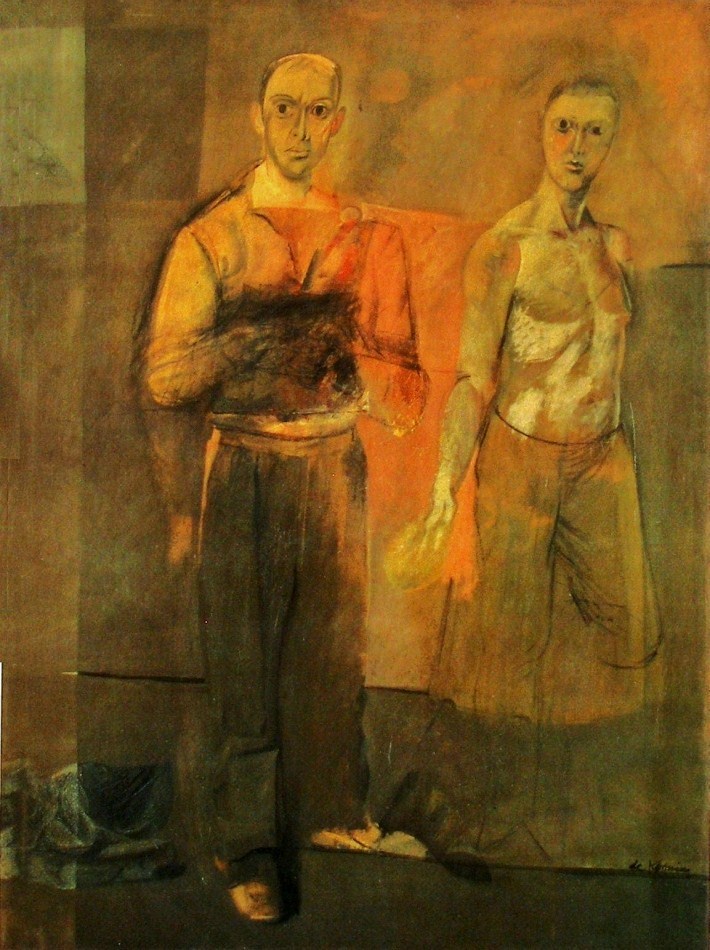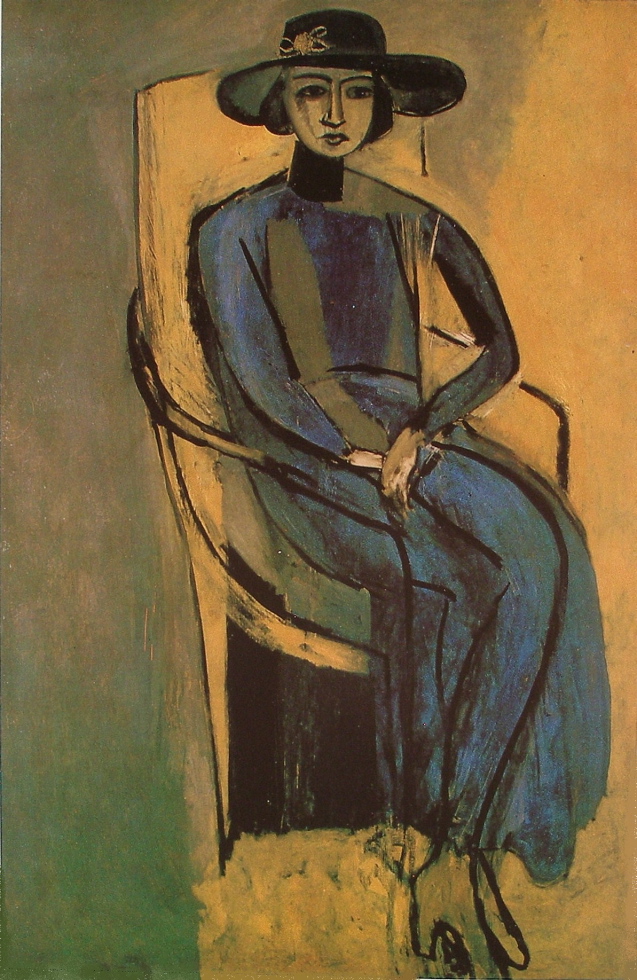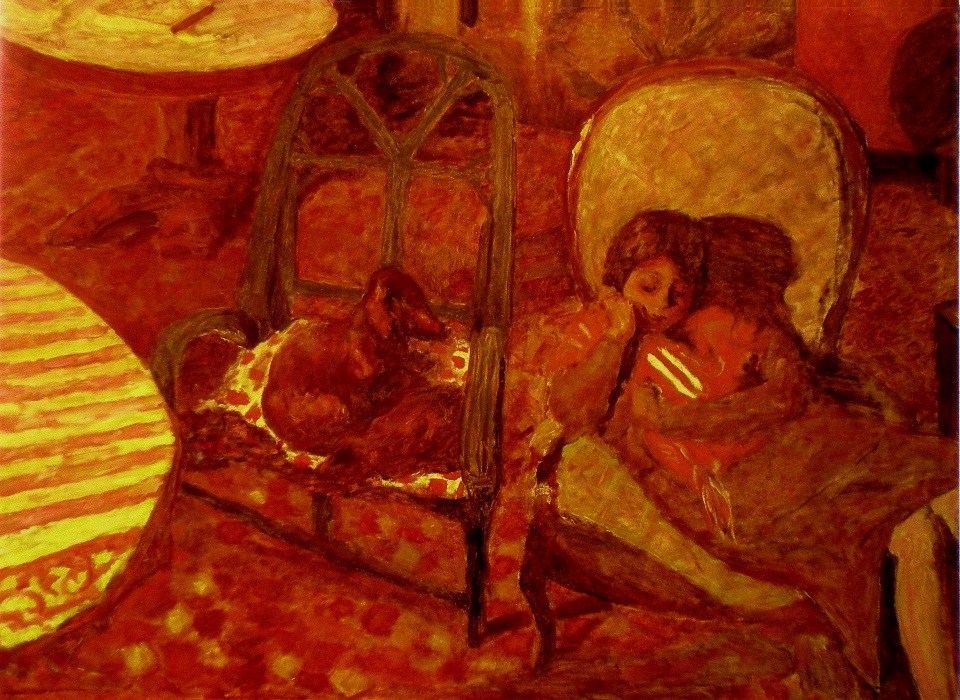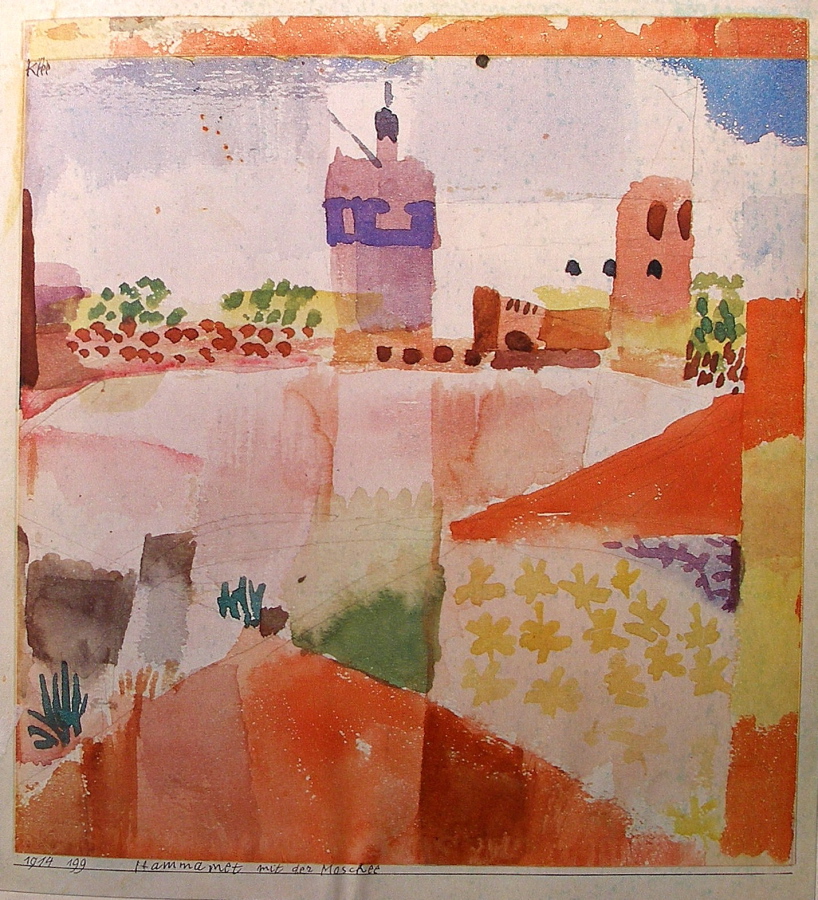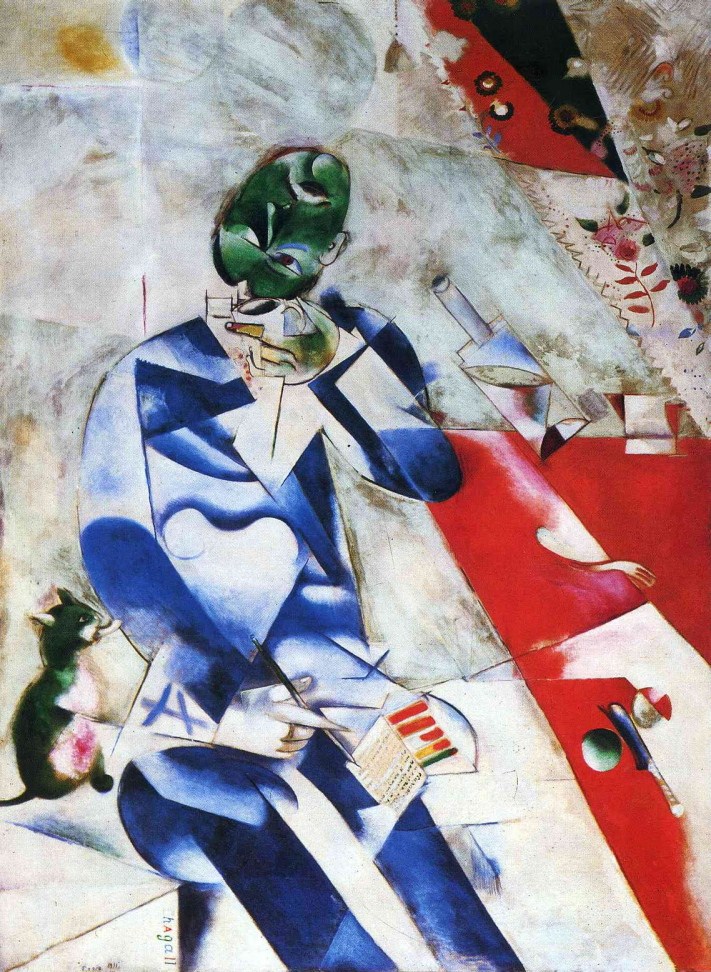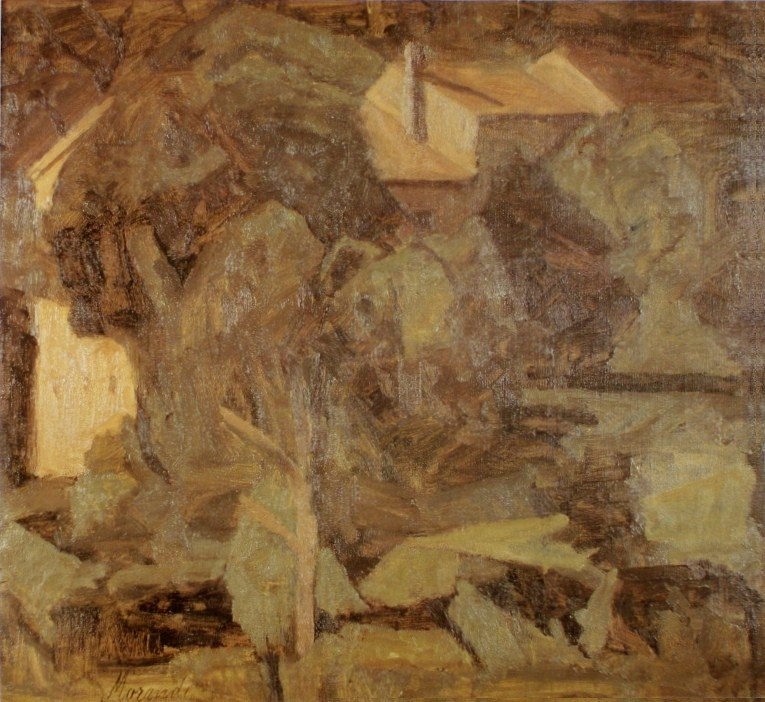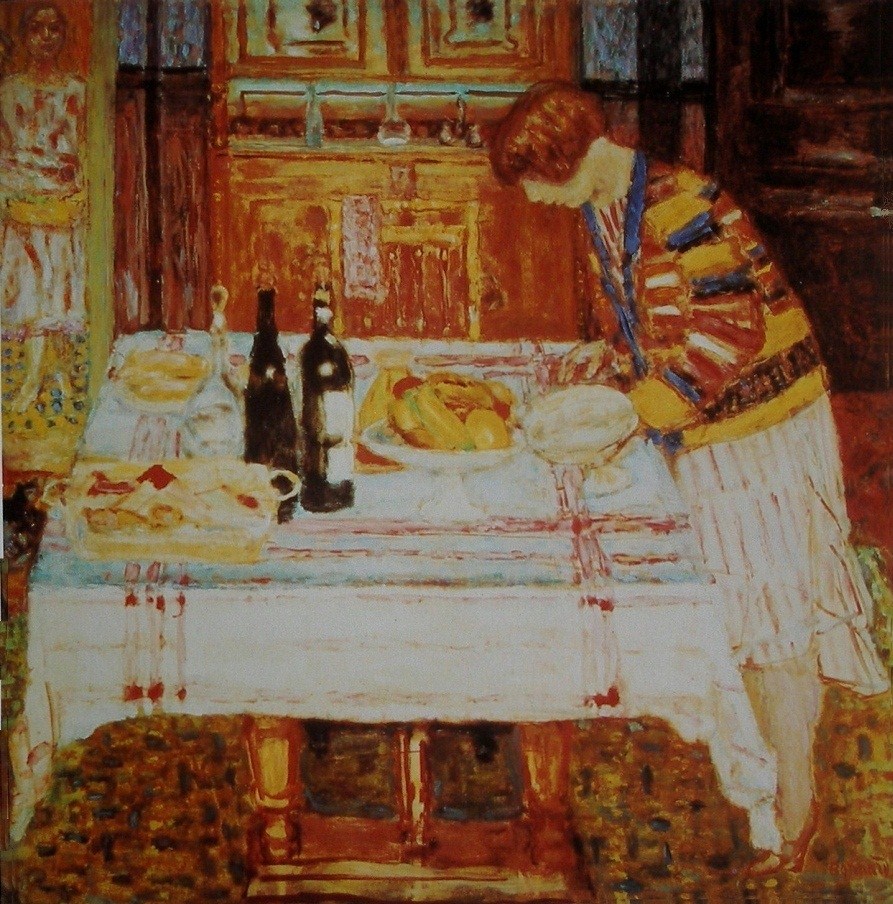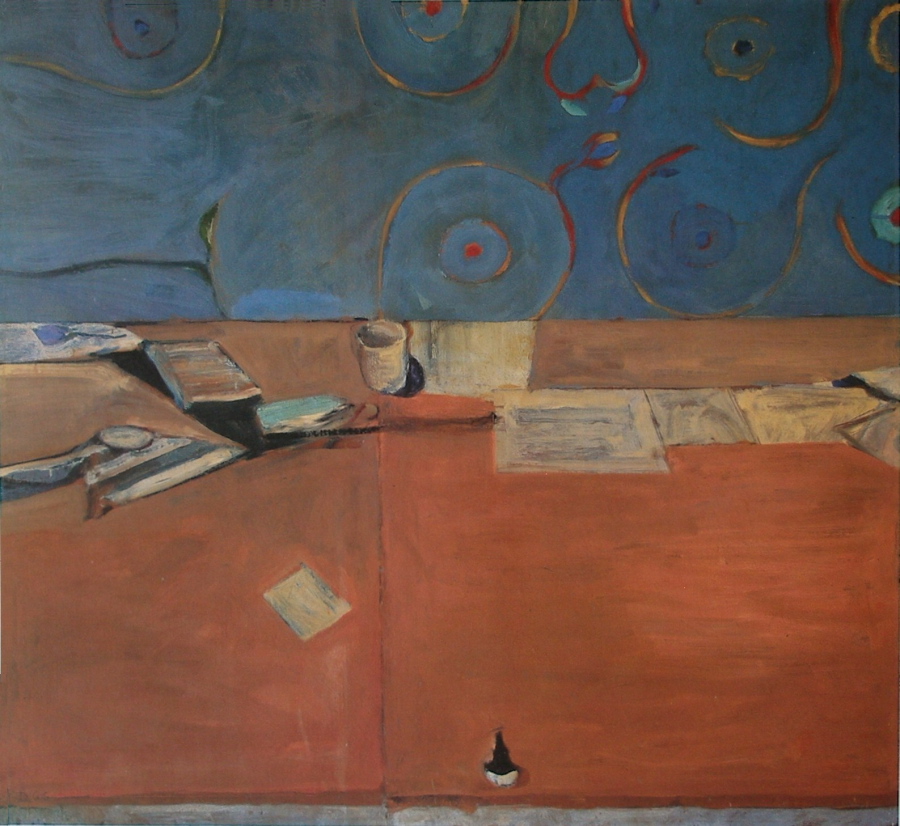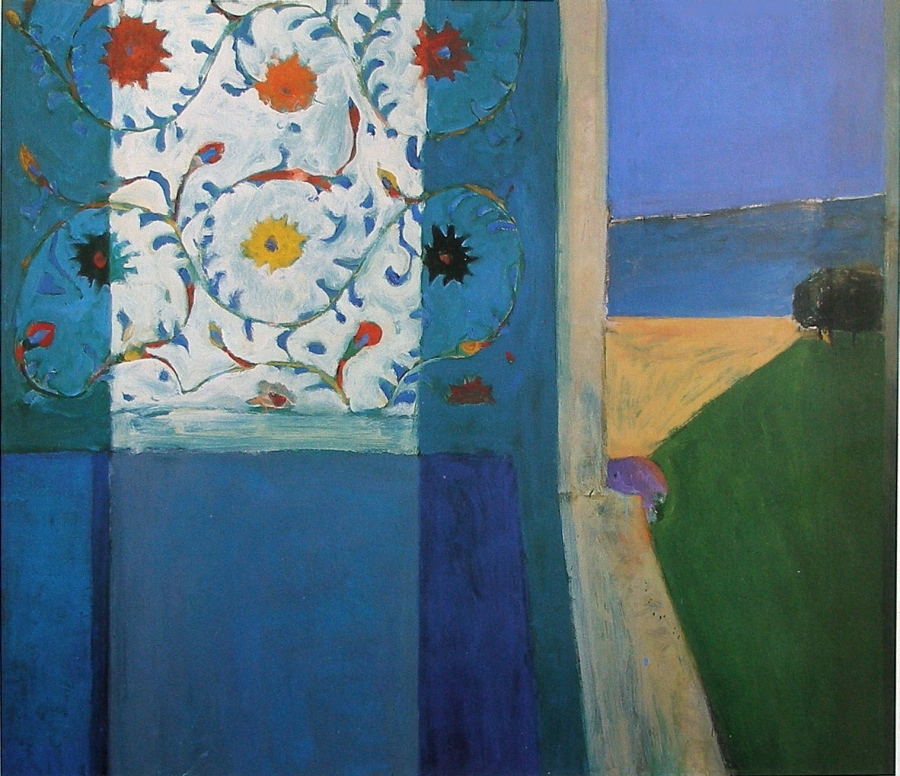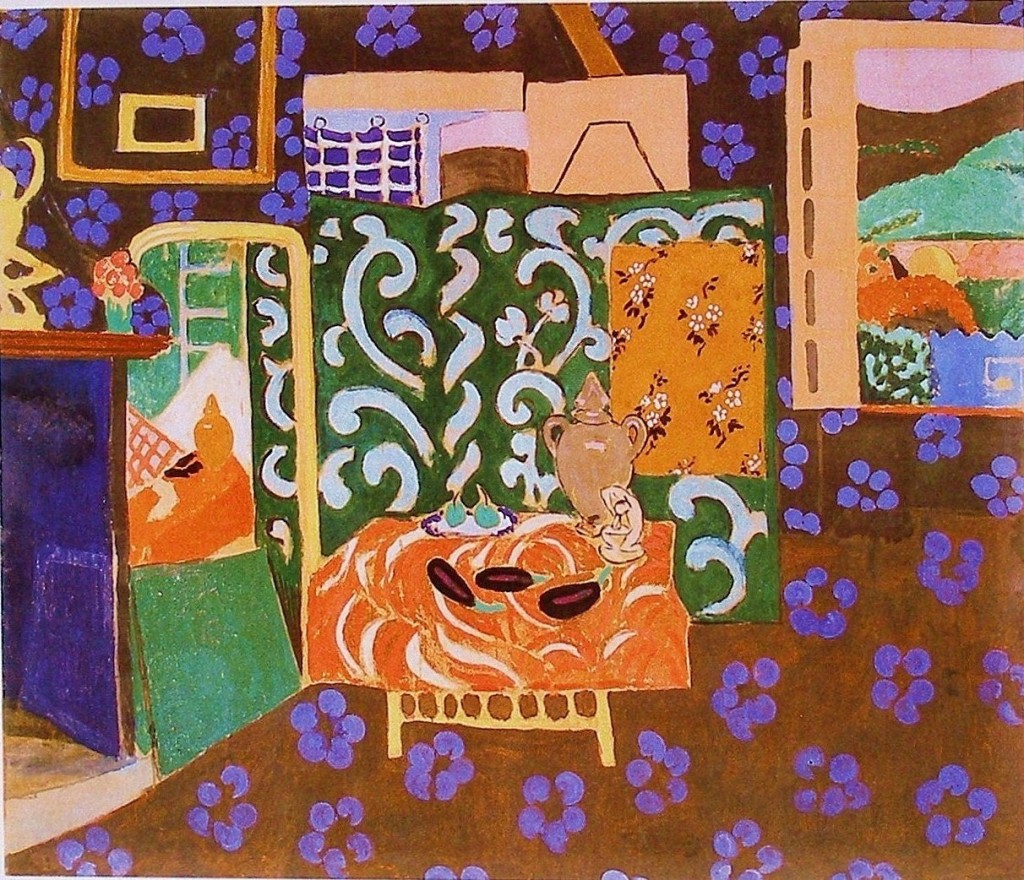There are some fascinating spatial considerations in this interesting painting by de Kooning. Not only has he integrated the painting with a motif of rectangles, de Kooning also uses them as spatial planes, providing us with the feeling of space. (which is meant to be felt before seen)
I will begin with the vertical rectangle at the left which has a feeling of being in front of the objects on the floor. And when you take in the adjacent rectangles they seem to be behind the figure. I hope you can feel it.
Now to the wonderful warm rectangle connecting the figures. (Or maybe I should say the orange has a feeling of a rectangle) Do you sense the orange being both in front and behind the figures? The feeling is emphasized by the horizontal line which runs behind the left figure’s legs, then turning upwards, connecting to another line at the other figures elbow. Yes we have another plane. One more, which I feel is the most exquisite. The sense of the left figure’s head being within a spatial plane. Do you feel the rectangle simultaneously in front and behind his head?
This is a very sophisticated painting and I will continue in the next posting.

